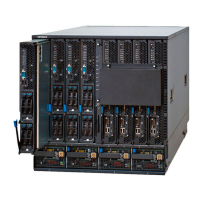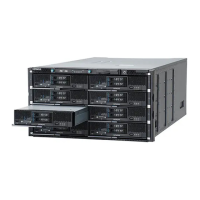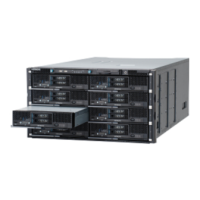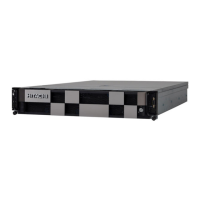Menu items
Selection
1
Description
• Enable
MOR State • <<Disable>>
• Enable
Enable or Disable MOR (memory overwrite
request).
TPM Force Clear
- Deletes the TPM data.
Note:
1. A value in double angle brackets, << >>, shows the default.
TPM device settings
Enable the status of Trusted Platform Module (TPM) device.
Use the following procedure for enabling the TPM Device.
1. Confirm that "TPM Physical Presence" value is <Asserted> in the System
Security sub menu.
2. Select <Disable> of "TPM Device", and press Enter. <Enable> is
displayed, and press Enter again.
3
. "Operation success, require reboot to take effect." is displayed.
4. "TPM State" menu is added in the System Security sub menu when "TPM
Device" value is <Enable>.
5. Select <Deactivate> of "TPM State", and press Enter. <Enable> is
displayed, and press Enter again.
6. "Operation success, require reboot to take effect." is displayed.
TPM is activated after rebooting the server blade.
RAS Configuration sub menu
Select an item to display or set, and press Enter.
Note: When the default value of any item has been changed in this sub
menu, it may take longer for the system boot after you return all setting
values to their defaults in Load Default Settings. If so, change values in this
sub menu to those before Load Default Settings is executed.
The following table shows description of menu items appeared in the left side
of the window.
Select the item to display or set, and press Enter.
Table 2-25 RAS Configuration menu items
Menu items
Selection
1
Description
Deconfigured Mode • <<Enable>>
• Disable
Enable or Disable CPU and DIMM
Deconfigured Mode.
UEFI setup menu
2-29
Hitachi Compute Blade 500 Series EFI User's Guide
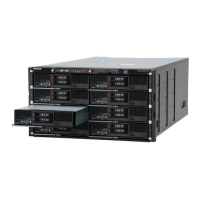
